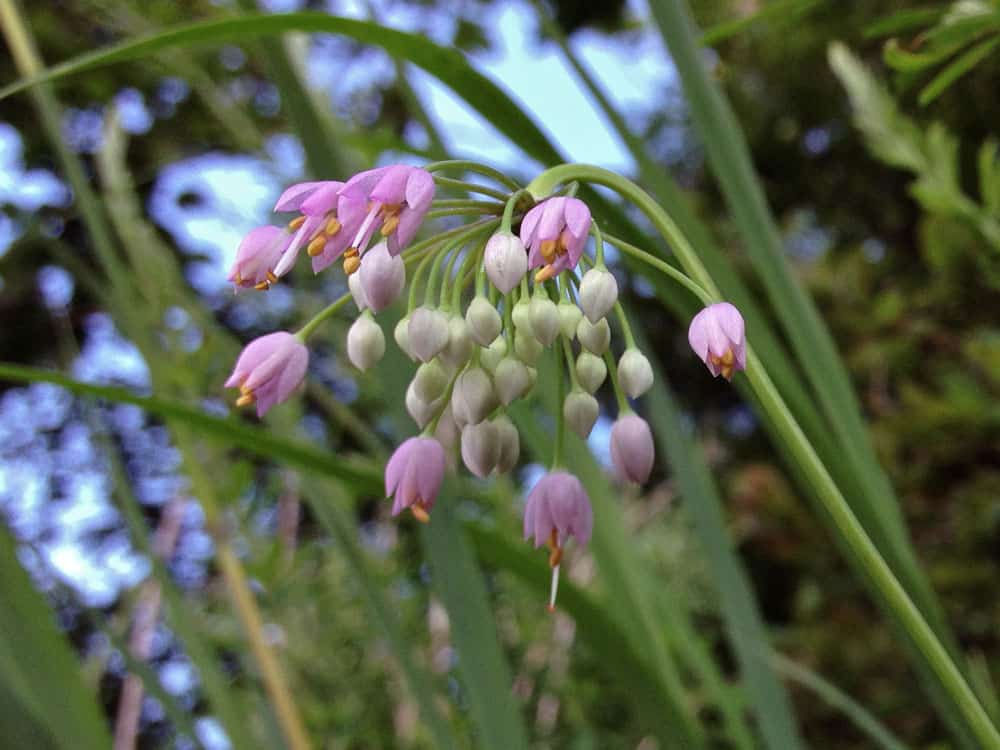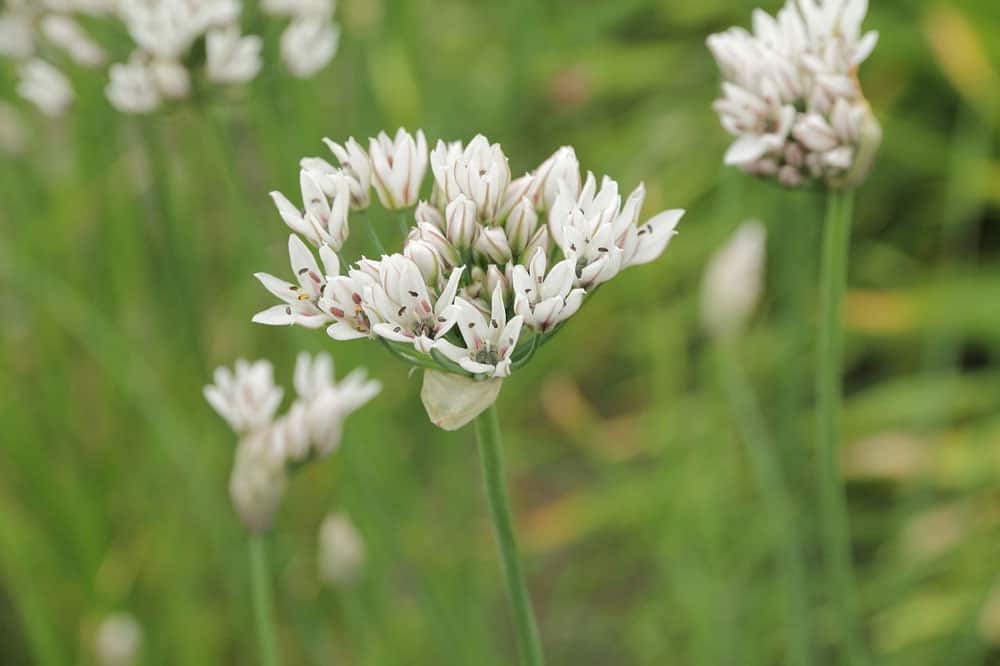Nodding onion (Allium cernuum) is a visually striking wildflower with drooping umbels of small, bell-shaped pink or white flowers. It’s native to large areas of the United States and Canada, and its unique nodding habit and airy appearance make it a charming addition to meadows, prairies, or naturalized garden areas. The nodding onion’s flowers are highly attractive to a wide range of pollinators, including bees, butterflies, moths, and various flies. Its prolonged blooming period from late spring to early summer ensures a consistent nectar and pollen source for these important insects.

Nodding onion is also a larval host plant for certain butterfly and moth species, including the Satyr Anglewing (Polygonia satyrus) and the Celery Looper Moth (Anagrapha falcifera), supporting their life cycles.
Nodding onion is well-suited for prairie or meadow gardens, where it can be planted in drifts or clusters, creating a naturalized and low-maintenance display. Gardeners can use nodding onion as a border plant or as an accent in mixed perennial beds as well. The plant’s drought tolerance and adaptability make it a great choice for xeriscape or low-water gardens.
Soil, Light, and Water Preferences
Allium cernuum is adaptable to a wide range of soil types, including clay, loam, and sand, as long as the soil provides good drainage. It thrives in full sun to partial shade conditions, making it suitable for various garden settings. While it prefers well-drained soils, it can tolerate conditions from dry to moist, showcasing its versatility in different garden environments.

Growth Habit and Spread
This plant grows 1-2 feet tall and features grass-like foliage that emerges in spring and persists into late summer. It spreads gradually through self-seeding and bulb offsets, forming colonies over time. Gardeners should initially space plants 6-12 inches apart to accommodate its spreading habit.
Flowering and Ecological Benefits
Allium cernuum produces nodding clusters of fragrant pink, purple, or sometimes white bell-shaped flowers from early to mid-summer. These flowers are a significant nectar source for pollinators, including bees, butterflies, and other beneficial insects. Additionally, its seeds and bulbs provide food for some wildlife, such as birds and small mammals. The plant’s onion scent and taste make it deer-resistant, further contributing to its ecological benefits. Being native to a large portion of the continental U.S., it supports local ecosystems and is low maintenance and drought-tolerant once established.
Other Uses and Considerations
Beyond its ecological benefits, all parts of the Nodding Onion are edible, offering an onion flavor that can be utilized similarly to green onions in culinary dishes. Historically, Native Americans used it for both food and medicinal purposes. Its ornamental appeal makes it suitable for various garden designs, including rock gardens, cottage gardens, and meadows.
Header Image: “Allium cernuum – Flickr – aspidoscelis (2)” by Patrick Alexander from Las Cruces, NM is marked with CC0 1.0.
